Yota Team Rescue Rangers! Or One day in the life of the tester Yota
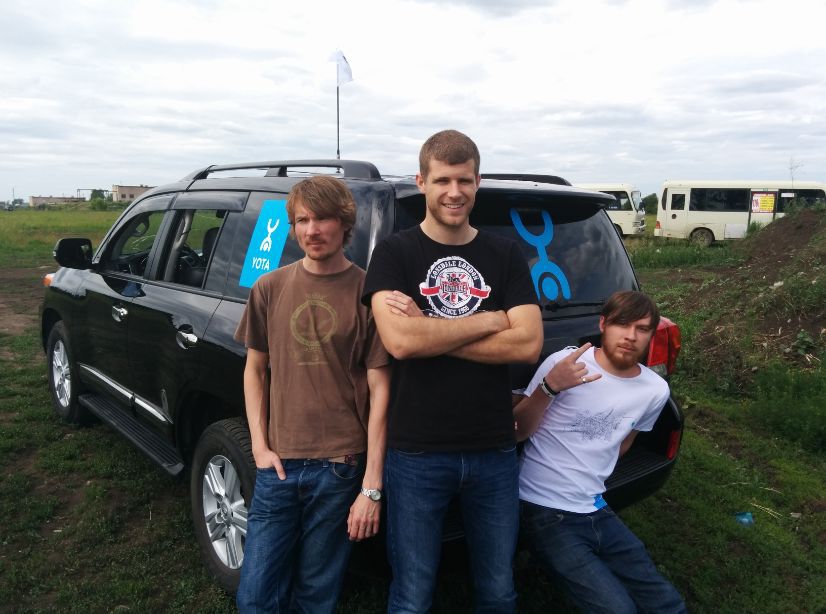
Hello! My name is Vladimir, I am an employee of the technical team Yota. As you, I hope, you know (), Yota, together with the radio station Ekho Moskvy, recently conducted a motor rally on the route Moscow-Kazan-Kirov-Perm-Yekaterinburg-Ufa-Orenburg-Samara-Saratov-Moscow. It was attended by journalists and we, Yota technical specialists. We joined the expedition to help Echo of Moscow colleagues with any questions that might arise and “in the field” to test the services of the fourth federal mobile operator Yota before its launch into wide commercial operation. The operator, who very soon will provide not only unlimited mobile Internet, but also voice communication - moreover, throughout the country and without roaming.
In general, you can find quite a lot of information about this project in social networks using the hashtags #echoroad and #yotamobile.
Technical information : A few words about voice communication in the Yota network, which is also implemented on top of LTE (or 4G) networks, which, as you know, only transmit data. If voice and 3G networks are a long-resolved problem everywhere, then in the case of the 4G, Yota was a pioneer. In fact, two LTE voice support technologies are now being used - VoLTE and CSFB.
')
VoLTE (Voice over LTE) - assumes that voice traffic is transmitted through a packet radio network, with guaranteed provision of this traffic to radio resources. However, the use of VoLTE, for operators who have long exploited 2G / 3G and started to introduce LTE, is quite a revolutionary and expensive thing. Therefore, at this stage, the overwhelming majority of operators are introducing the “more evolutionary” technology of CSFB.
CSFB (CS Fall Back) assumes that for a device (UE) connected to the LTE network, if there is a need to make an incoming or outgoing voice call, the network performs the procedures that move the device to the 2G / 3G network, where the call is served. After the call is completed, the network moves the device back to LTE. This technology does not require additional equipment (to the fact that the operator has already been installed for its 3G and 4G networks) and is relatively simply implemented by existing equipment (with modified software)
I want to talk about one day from our real journey. Why present? Because it was the classic “dust, roads”, early ascents, short breaks for sleep and rest, a lot of acquaintances (Echo of Moscow held meetings with its listeners in the cities of broadcasting), a lot of interesting places (which cost one farm with pigs and ... peacocks under the city of Orenburg shawls!) - and tests, tests, tests, as well as assistance to journalists who used the services of Yota during the trip.
We traveled on a black Land Cruiser 200 with branded stickers - of course, not because of the “Ponte”, but because it is a suitable car for long trips around Russian off-road places! And she did not let us down!
So, the most significant day ...
This is every day travel! It began with tests and ended with them: in the new city, beyond its borders, on the highway - we were faced with the task of conducting their standard set, namely:
- testing of mobile data and voice services both in 2 / 3G and 4G networks (in separate and joint mode);
- voice calls - both incoming and outgoing, within the Yota network, to and from other mobile operators (MegaFon, Beeline, MTS, Tele2, local cellular companies), as well as voice calls from the local telephone network.
Technical information : Concerning testing in the mode of joint and separate work in 2 / 3G and 4G networks. As already mentioned, Yota actually works in two networks - historically its own - 4G, and based on MegaFon as a virtual operator, 2 / 3G networks. At the same time, when a mobile phone is connected to a cellular network, it is registered in two subnets: a CS domain (Circuit switch, voice communication) and a PS domain (Packet switch, data transfer). This is necessary for voice calls and data transfer. But in 4G networks, no connection to the CS-domain is made, and to receive voice services, the subscriber device is transferred to the CS-domain of 2 / 3G networks.
One day in the landmark city of Orenburg in many ways became the middle of our expedition, not only in terms of the route, but also geographically - the city stands in two parts of the world at once - in Europe and Asia. Just like Istanbul.
So, after an early breakfast, we went in the morning in our car to the local square, Yu.A. Gagarin, to work - at 9 am we were already in place.
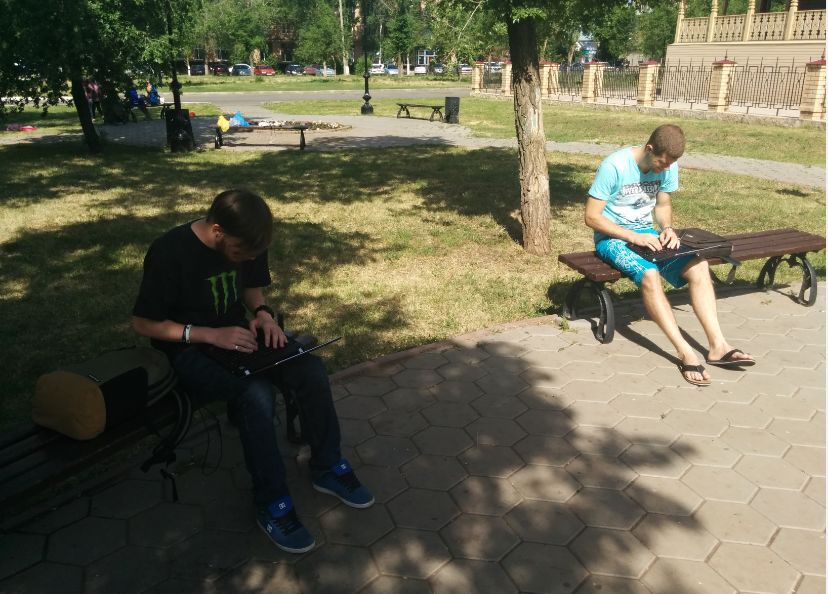
Despite such an earlier time, the city was already hot, steadily approaching the mark of 30 degrees. She only frightened me — but not my colleagues, who, apparently, were used to the hot weather — she accompanied us all the way. The only exception was Saratov, who met us with rains. The local children were not afraid of the weather either - they were entertained by wrapping themselves in carpets (I wonder if this could be a local custom or a game of survival?).
According to the results of testing, the speed was reached in maximum volumes, that is, 20 Mbit / s for download and 6 Mbit / s for return (the modem and the phone are the same). Voice tests took about three hours and were successful. In the square, we courageously lasted until 11 am, but when we were completely “over-baked”, we moved to the nearest cafe. We were pleased that the tests were able to pass completely - not every city in the path of our motor rally had such an opportunity.
Technical information : The top parameters of the Yota network in terms of data transfer are, as already mentioned, 20 Mbit / s for download and 6 Mbit / s for return. These parameters are set by the operator on the network. The reason - not in its limitations, but in the fact that Yota, as you know, is focused on providing unlimited Internet traffic. Thus, the overload situation is avoided (in the WiMAX era, Yota - even at the very beginning of its existence - the maximum download speed was set at 10 Mbit / s). The speed of 20 Mbit / s is abundant enough for any actions online: from surfing and social networks to Skype video calling (see below) and watching videos.
As for the speed of return - if you look at the Yota tariffs, then its ratio to the download speed is on average 1: 3, respectively, in this case - 6 Mbit / s. But this is not connected with the network, but with subscriber devices - their transmitters are not designed for very high return rates (but you don’t want the modem to be sized, for example, with a brick?)
For speed reasons, for example, here are some of Skype’s video calling specifications:
- video calling / screen sharing, the minimum download and upload speeds are 128 Kbps / 128 Kbps, the recommended ones are 300 Kbps / 300 Kbps;
- video communication (in HD format), the minimum download and upload speeds are 1.2 Mbit / s / 1.2 Mbit / s, recommended -1.5 Mbit / s / 1.5 Mbit / s;
- Group video (5 participants), the minimum download and upload speeds of 2 Mbit / s / 128 Kbps, the recommended - 4 Mbit / s / 512 Kbps.
(Source - support.skype.com)
Then there was a long meeting of “Echo of Moscow” in the memorial museum-guardhouse of Taras Shevchenko.

After the meeting, we were invited to visit one of the fans of the radio station on the farm. She became a breath of clean air after hundreds of kilometers of road.

There were many animals, the farm :)
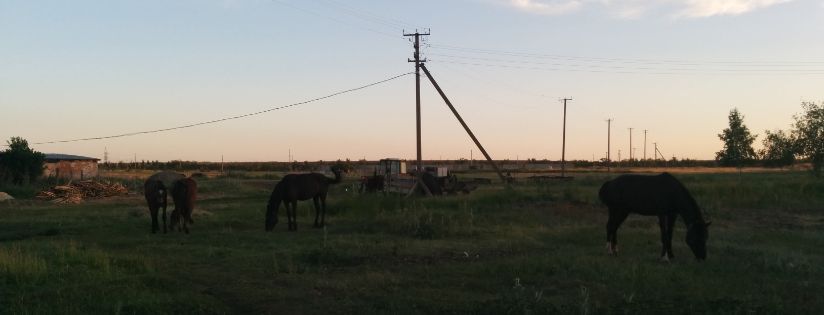

But most surprised by the presence of the peacock.

We had dinner at the farm in the cozy company of Echo of Moscow representatives.
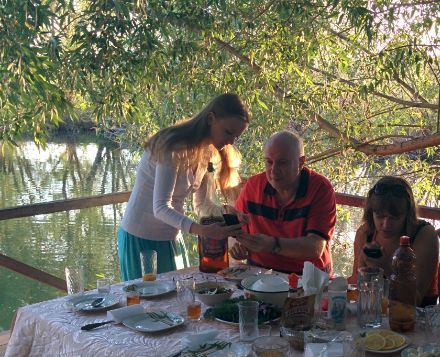
They didn’t do anything even after dinner - they mastered driving the tractor.

In the middle of the night, it was decided to test the network again - first in Europe, then in Asia. In Asia, the connection was.
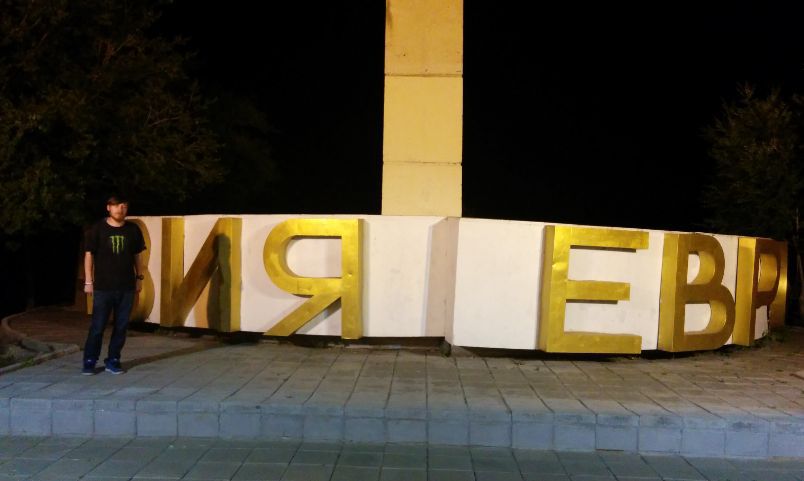
And in Europe too.

Here is such a day! :)
As a result
On my phone (I used the LG Nexus 5) for the entire trip I had about 50 screenshots of speed tests (used Speedtest + G-NetTrack). Measured speeds - from zero in the open field to the already mentioned maximum 20/6 Mbit / s. In this case, the speed could be different and in one place. This is one of the most frequently asked questions - why is the speed so different? The answer is simple - the access speed in a particular location depends on the signal strength (in the bunker it will be minimal) and the network load - if you are alone in a cell, then the entire Internet is yours;)
Technical information : The access speed also depends on the subscriber's distance from the base station - the farther it is, the slower the speed. However, here 4G technology has its advantages over 3G networks. In the latter, a cell has a so-called “breathing effect” - that is, if the network load is large, then the base station (BS) simply reduces its radius of action, and the remote subscriber can simply fall outside its limits (if, for example, the some more clients who downloaded it). In 4G there is no such effect - due to the fact that the network itself is more powerful and can serve the subscriber in the far radius - although in order to provide him with a service, you will have to spend 3-4 times more network resources. But they, as they say, she has.
Salvation drowning ...
Not without rescuers. Our fellow travelers, Echo of Moscow journalists, also did not stand aside, using the Yota mobile Internet every day and making calls, in fact, also participated in the tests. In addition, they sent us measurements of the speeds of mobile Internet access. In general, the picture here was even. If there were small problems, then journalists quite often solved them on their own. I had to come to the “place of events” several times when my colleagues had more serious problems. As I already mentioned, Ekho Moskvy held meetings with its listeners, and the broadcasts from these meetings went live and through devices connected to our network. And so, several times she disappeared ... but the problem in the end, as it turned out, was connected with gadgets. The issue was solved mainly by rebooting, after which the network was located again.

Technical Information : Speaking of phones. At the disposal of the team at the time of the entire trip, there were not only Nexus, but also other smartphones, including iPhone 5C, Samsung Galaxy, YotaPhone, Nokia - all with unique Yota SIM cards. All of them work in 4G networks, with the exception of the “apple” product. But this is a “bye” situation - as is known, the fifth iPhones support LTE (4G), but in order for it to work, the issue must be resolved at the level of the “firmware” of the device, what Apple is currently working on. On the expedition, all smartphones were manually configured in advance.
Travel notes
Ten days of travel in this mode, of course, did not go without interesting observations on the road - these are bikers who meet us in the cities ...
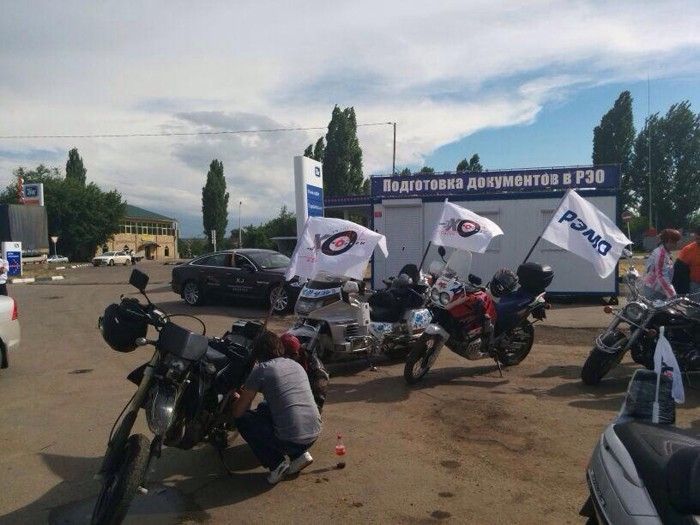
... royal samovars, and moonshine, sold on the roadsides

... and types of stellas ...
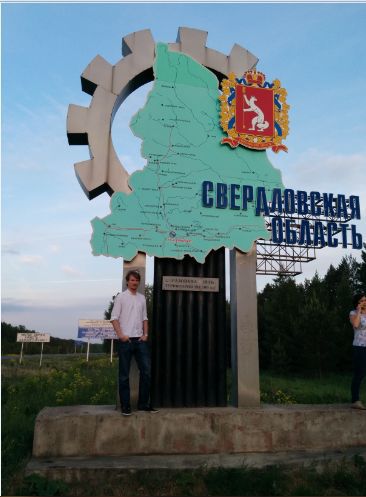
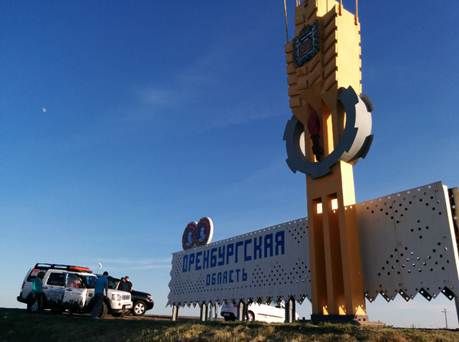
... rivers ...

... and cities ...
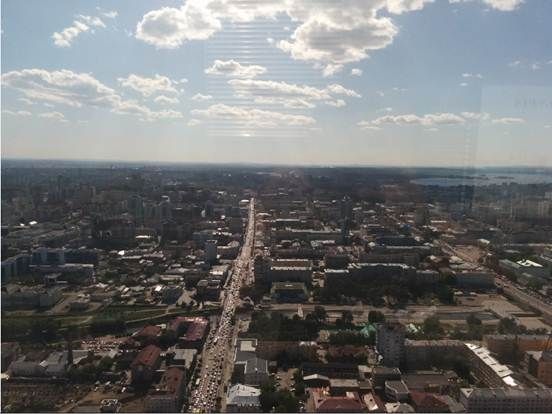
Glory to the gods, there were no critical situations, but I remember a case when a wagon passing by crawled very anxiously ... And once again the cat promptly ran across the road to Perm, but there were no casualties.
The quality of Russian roads is known, but "in some places - repair "
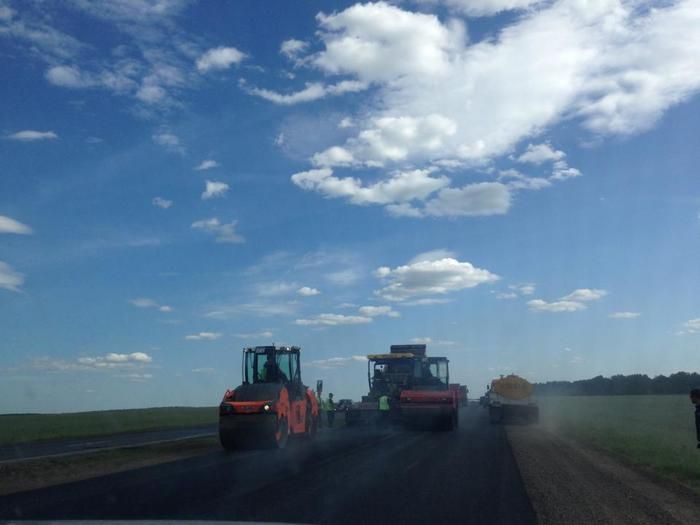
We saw several major accidents on wide and seemingly straight sections of the road ... The view beyond the windows was diluted by the truck drivers' audio accompaniment - we had a radio, and we could know in advance where the traffic jam had occurred, etc. On one of the hauls, we were caught up with the Echo of Moscow listener - the radio station held a special competition.
An interesting situation was when leaving Ekaterinburg - the expedition had five navigators in total, and they all showed different roads. I had to pave the way by myself. We stopped in Karabash, a famous ecologically depressed city , got into a dark future, where the water in the lakes is of a strange color, and black slag dumps around.

On the roads, we avoided roadside cafes, etc. to avoid problems - although it was clear that some of them are popular and many cars have accumulated around them. In this regard, I remember the village of Umet, where barbecues, taverns and cafes were more than houses.

Summarizing
So, the summary statistics on the Yota network tests during the 14 days of travel of our technical cleanup team:
- more than 150 measurements of mobile transmission speeds using tests;
- more than 10 GB of downloaded information;
- more than 1500 minutes of voice calls;
- more than 20 hours of tests.

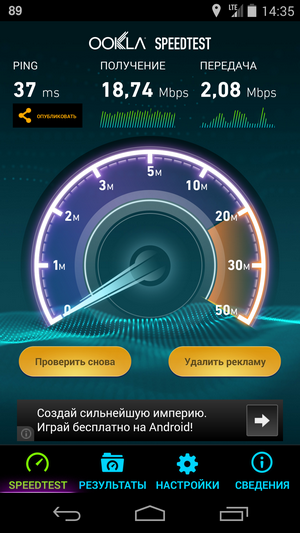
As an epilogue
What did these 10 days of road testing of Yota services show in real “combat” mode? In addition to the fact that the team of technical specialists worked out carefully and harmoniously (that is how we always strive to work for the benefit of our customers), we on-site were convinced that the Yota network was ready for a full launch across the country. The specifics of the project are not only work based on the infrastructure of Scartel and MegaFon, and in several networks at once - 4G and 2 / 3G, but also the creation of a single roaming-free space in our country, both for the Internet and for voice. Implementing such a high-tech project throughout Russia is not at all a trivial and ambitious task, taking into account both the size of the country and the technological specifics, and the absence of both analogues and experience in building such operators in the Russian market. And this is where our adventures don't end. The most interesting is yet to come!
Source: https://habr.com/ru/post/228551/
All Articles